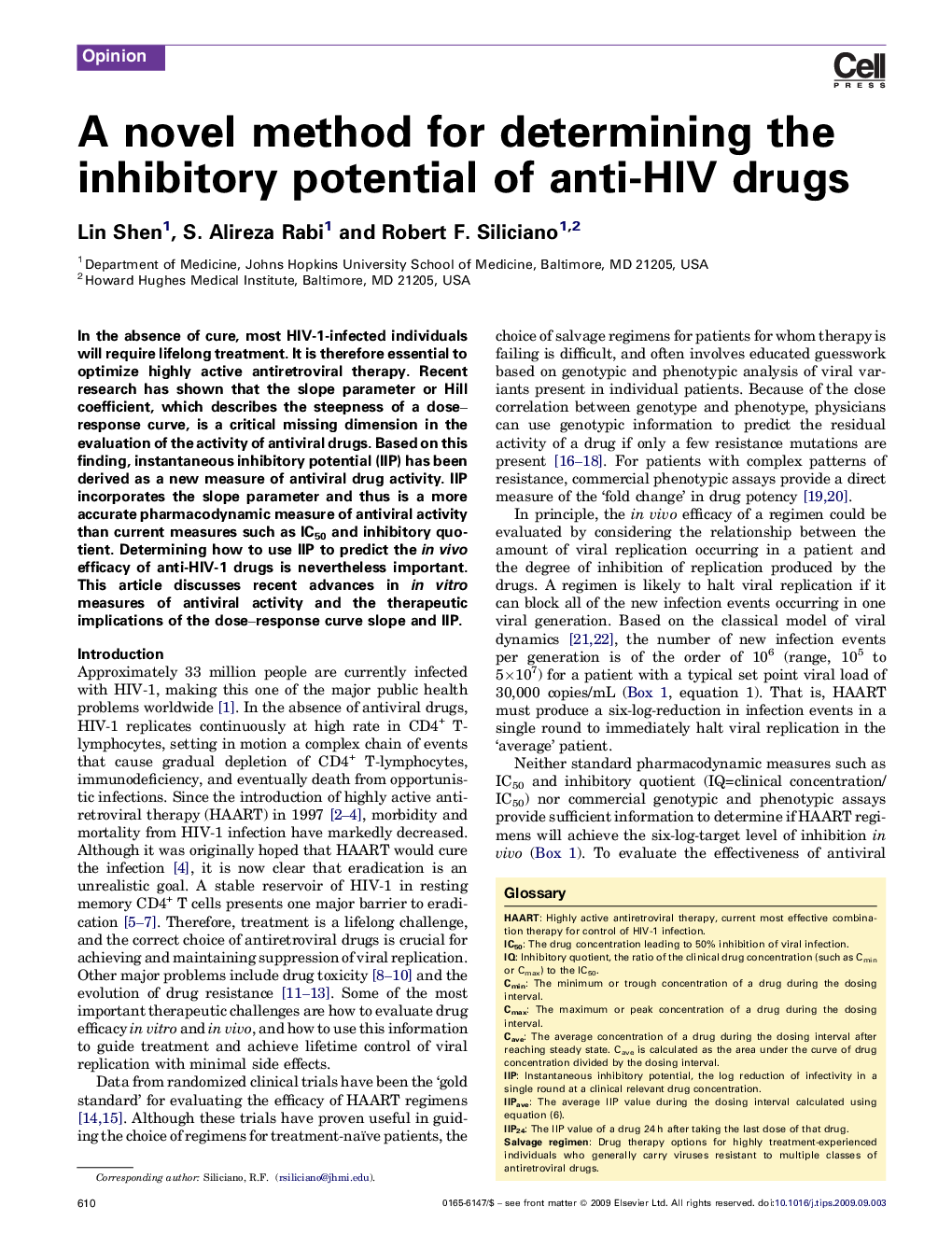| Article ID | Journal | Published Year | Pages | File Type |
|---|---|---|---|---|
| 2573408 | Trends in Pharmacological Sciences | 2009 | 7 Pages |
In the absence of cure, most HIV-1-infected individuals will require lifelong treatment. It is therefore essential to optimize highly active antiretroviral therapy. Recent research has shown that the slope parameter or Hill coefficient, which describes the steepness of a dose–response curve, is a critical missing dimension in the evaluation of the activity of antiviral drugs. Based on this finding, instantaneous inhibitory potential (IIP) has been derived as a new measure of antiviral drug activity. IIP incorporates the slope parameter and thus is a more accurate pharmacodynamic measure of antiviral activity than current measures such as IC50 and inhibitory quotient. Determining how to use IIP to predict the in vivo efficacy of anti-HIV-1 drugs is nevertheless important. This article discusses recent advances in in vitro measures of antiviral activity and the therapeutic implications of the dose–response curve slope and IIP.
